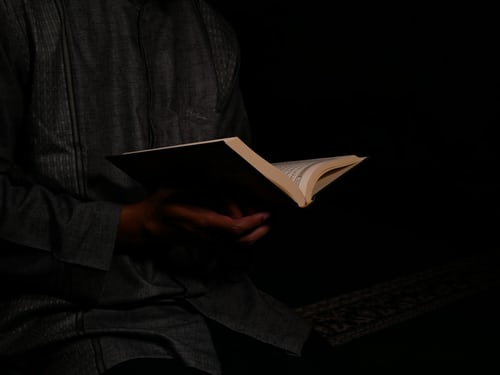Inspiring Older Readers
 posted on 18 Feb 2019
posted on 18 Feb 2019
Rereading Scott Fitzgerald’s The Great Gatsby
It is astonishing to remind ourselves that F Scott Fitzgerald’s masterpiece, The Great Gatsby, published in 1925, was only his third novel and predated a good proportion of his acclaimed short stories. I have just read it for the third time and was left completely in awe of what Scott Fitzgerald achieves in this relatively slender novel.
I am hardly pointing out anything new in singling Gatsby out as Scott Fitzgerald’s masterpiece, however, for there can be few more influential novels in American literature. One can see its influence throughout virtually all of Jay McInerney’s work (reviewed here and here on Letterpress), in Donna Tartt’s early-90s bestseller The Secret History, and in Ethan Canin’s For Kings and Planets. And sometimes his influence is evident in provoking reaction rather than imitation. For example, it could be argued that in their adherence to real life, ordinary people and unadorned prose, the generation of younger writers who dominated the 80s and whom Granta magazine dubbed the ‘dirty realists’ – Raymond Carver, Richard Ford, Tobias Wolff et al – were at least in part reacting against the glamour and romanticism of Scott Fitzgerald.
Anyway, be all that as it may, what is it that makes The Great Gatsby such an extraordinarily powerful and satisfying novel?
Well, several things contribute to this. First, the fact that in its entirety it is narrated by the articulate and somewhat enigmatic Nick Carraway, who throughout is both in thrall to and repelled by the Gatsby myth.
Second, while it has a heart-stopping moment of action – which I won’t reveal because it will spoil the plot – its greatest glories lie in Scott Fitzgerald’s pristine imagining and sometimes swooningly beautiful prose.
And third, and somewhat paradoxically, the fact that it is a fragile novel. Rather like a fine perfume or a vintage wine, the volatile properties that make it so enticing and on which so much depends are easily lost – they can be dispersed too quickly, ruined by haste or clumsiness, or simply missed because inadequately savoured. This, it seems to me, is what successive films based on the novel have done. Each has been louder and more lumpen and grotesquely literal than the last, as if somehow the elusive essence of Scott Fitzgerald’s greatest novel can best be captured with production budgets in the hundreds of millions. There is, mind you, something pleasingly Gatsbyan about that.
And yet, as if to counter this view of fragility, Gatsby is also Scott Fitzgerald’s most powerfully and enduringly imagined work. Despite its fable-like atmosphere and yearning prose, there are aspects of Gatsby that have entered the public imagination so deeply that they now seem real. The narrowly separated promontories of East and West Egg in Long Island Sound, for example, where the novel is set. These coastal towns, once fishing hamlets but newly fashionable in the 1910s and 20s for their desirable ocean setting and the vast mansions, gardens and pools stretching down to the water’s edge, have entered the language: East Egg representing older money, more genteel; West Egg richer, more opulent, newer money and far more fashionable. But in fact they don’t exist. East Egg is based on Manhasset Neck; West Egg on Great Neck.
And Gatsby himself, of course, has entered the language as a shorthand for eligibility, extreme wealth, mysteriousness – indeed for the whole romantic notion of the glittering Twenties, the Jazz Age, gilded lives. But if you read the novel it is apparent that Scott Fitzgerald’s intentions are far more complex than this. For what makes the novel so powerful is its juxtaposition of extreme wealth and opulence and the rather squalid little affairs that bring this handful of central characters together: on the one hand, the glamour of dreams and the unparalleled wealth of the imagination; and on the other, tawdry and impoverished reality. Rather than wealth and glamour, Gatsby is really about moral squalor, delusion, loss and tragedy.
While utterly different in themes and characters, The Great Gatsby shares some of the same hard-to-explain heft and imaginative power that Conrad’s Heart of Darkness has. Both are peerlessly imagined works, powerful partly because of their brevity, superbly written and each embedded in a deep and metaphorically rich hinterland. And of course – and I have only just realised this – Nick Carraway, disenchanted, unflinchingly observant, a melancholy, lonely figure – is Scott Fitzgerald’s version of Conrad’s narrator-philosopher, Charles Marlow. Indeed, in writing The Great Gatsby Scott Fitzgerald might also have been thinking, as Conrad did of the brutal colonising ventures of the Congo, “a taint of imbecile rapacity blew through it all…”
It has been many years since I last read Gatsby and I finished it with a sigh of relief: Scott Fitzgerald had done it – it was just as I remembered: faultless. The cover art of the early-70s Penguin Modern Classics edition pictured above is ‘Montparnos Blues’, a 1920 painting by Kees Van Dongen.
Alun Severn
February 2019
Scott Fitzgerald elsewhere on Letterpress: